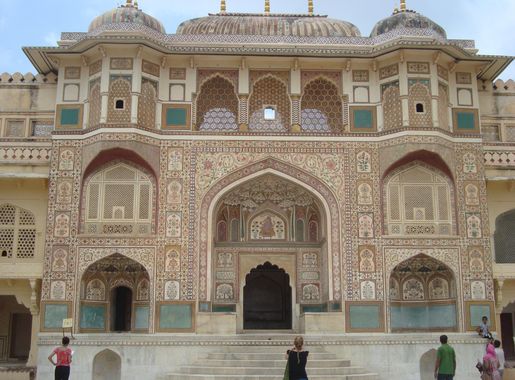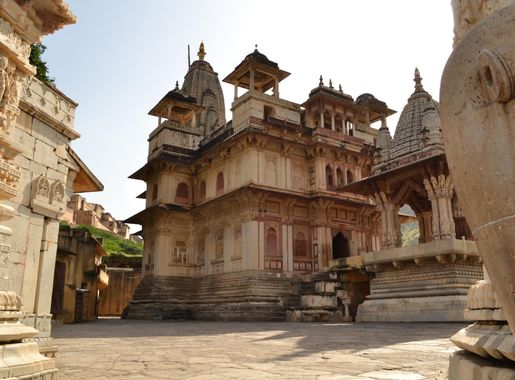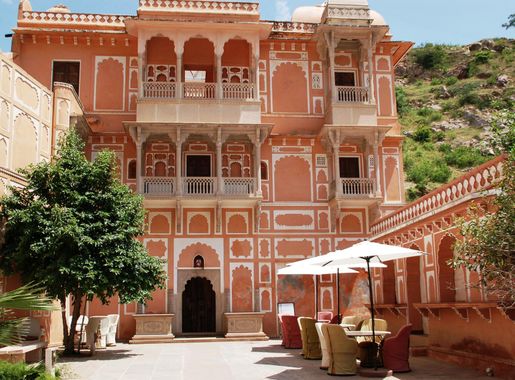
The Majestic Amer: Gateway to Jaipur's Royal Heritage
Discover the enchanting Amer in Jaipur, a neighbourhood steeped in royal history, breathtaking architecture, and vibrant local culture.
Nestled in the heart of Rajasthan, the Amer neighbourhood is a captivating blend of history, culture, and architectural grandeur. Dominated by the awe-inspiring Amer Fort, this area is a testament to the opulence of the Rajput era. As you wander through the fort's sprawling courtyards, intricate palaces, and ornate temples, you'll be transported back in time to an age of chivalry and splendour. Beyond the fort, Amer offers a rich tapestry of experiences. The Maota Lake, shimmering at the base of the fort, provides a picturesque backdrop perfect for photography enthusiasts. Nearby, the Panna Meena ka Kund, a historic stepwell, offers a serene escape with its geometrically patterned steps and tranquil ambiance. For the culturally inclined, Amer's vibrant local markets are a treasure trove of traditional Rajasthani crafts, textiles, and jewellery. The neighbourhood's narrow lanes are dotted with artisanal shops and eateries, where you can savour authentic Rajasthani cuisine. From spicy curries to sweet delicacies, the flavours of Amer are sure to tantalize your taste buds.
Local tips in Amer
- Visit Amer Fort early in the morning to avoid the crowds and enjoy the serene atmosphere.
- Wear comfortable shoes as there is a lot of walking and some steep climbs around the fort.
- Don't miss the light and sound show at Amer Fort in the evening to learn about its history in an engaging way.
- Carry a bottle of water and stay hydrated, especially during the hotter months.
- Explore the local markets for unique souvenirs and traditional Rajasthani handicrafts.
The Majestic Amer: Gateway to Jaipur's Royal Heritage
Nestled in the heart of Rajasthan, the Amer neighbourhood is a captivating blend of history, culture, and architectural grandeur. Dominated by the awe-inspiring Amer Fort, this area is a testament to the opulence of the Rajput era. As you wander through the fort's sprawling courtyards, intricate palaces, and ornate temples, you'll be transported back in time to an age of chivalry and splendour. Beyond the fort, Amer offers a rich tapestry of experiences. The Maota Lake, shimmering at the base of the fort, provides a picturesque backdrop perfect for photography enthusiasts. Nearby, the Panna Meena ka Kund, a historic stepwell, offers a serene escape with its geometrically patterned steps and tranquil ambiance. For the culturally inclined, Amer's vibrant local markets are a treasure trove of traditional Rajasthani crafts, textiles, and jewellery. The neighbourhood's narrow lanes are dotted with artisanal shops and eateries, where you can savour authentic Rajasthani cuisine. From spicy curries to sweet delicacies, the flavours of Amer are sure to tantalize your taste buds.
Iconic landmarks you can’t miss
Amber Palace
Explore the grandeur of Amber Palace, a historic fortress in Jaipur, Rajasthan, blending stunning architecture with rich cultural heritage.
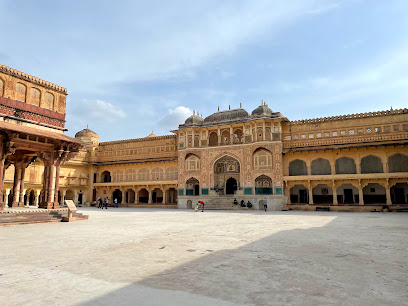
Jaigarh Fort
Discover the majestic Jaigarh Fort, a historical marvel in Jaipur, showcasing stunning architecture, breathtaking views, and the world's largest cannon.
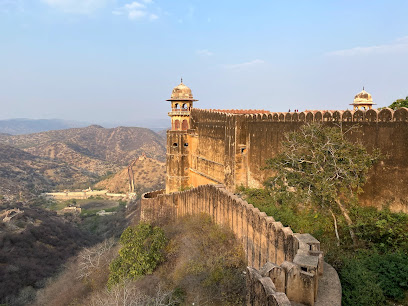
Sheesh Mahal Amber Fort
Explore the breathtaking Sheesh Mahal in Amber Fort, a stunning historical site showcasing exquisite Rajput architecture and mesmerizing mirror work.
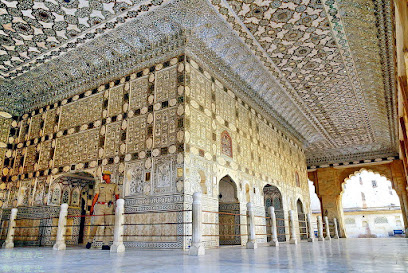
Jaivana Cannon
Discover the awe-inspiring Jaivana Cannon at Jaigarh Fort, a monumental piece of history offering stunning views and rich cultural heritage.
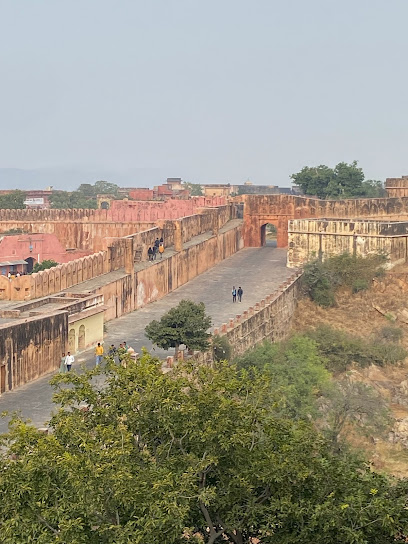
Amer Stepwell
Explore the Amer Stepwell: A Historical Landmark in Jaipur with Stunning Architecture and Tranquil Ambiance.
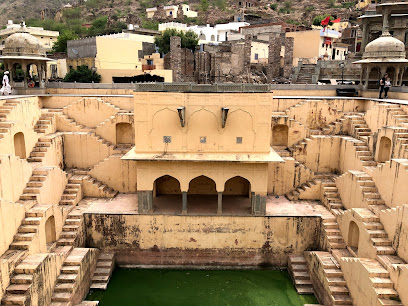
Amber Fort View
Amber Fort View offers breathtaking sights of Jaipur's majestic Amber Fort, where history and stunning landscapes come together in a captivating experience.
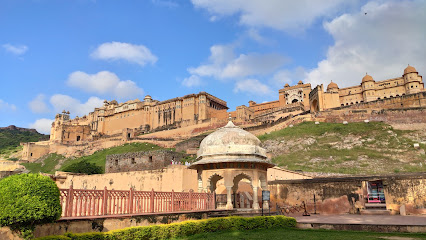
Chand Pol (Moon Gate)
Experience the grandeur of Chand Pol, the historic Moon Gate of Jaipur, a gateway to the majestic Amer Fort and a symbol of Rajasthani heritage.

Ganesh Pol
Explore Ganesh Pol, the stunning gateway to Jaigarh Fort, and immerse yourself in the rich history and vibrant culture of Rajasthan's majestic heritage.
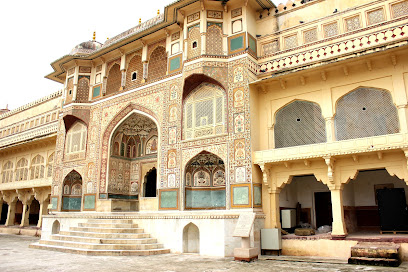
Jaleb Chowk
Explore Jaleb Chowk, a vibrant historical landmark in Amer, Rajasthan, rich in culture, crafts, and the majestic beauty of the Amer Fort.
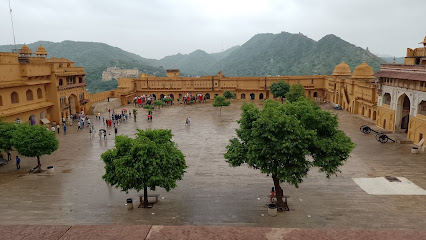
Great Wall Of Jaipur
Explore the Great Wall of Jaipur, where history meets breathtaking views in a captivating museum experience.
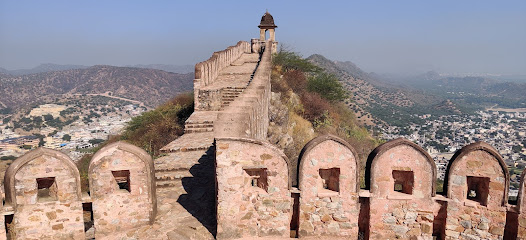
Unmissable attractions to see
Jaigarh Fort
Experience the grandeur of Jaigarh Fort, a historical fortress with breathtaking views and rich heritage in Jaipur, Rajasthan.
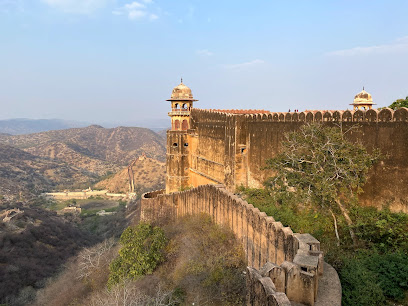
Amer Stepwell
Explore the Amer Stepwell, a stunning historical landmark in Jaipur, showcasing ancient water conservation techniques and intricate architecture.
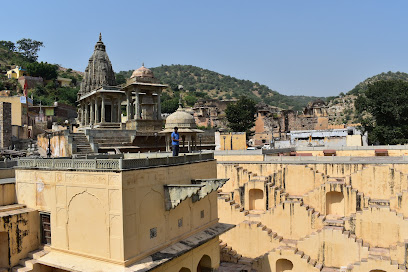
Amber Fort Light and Sound Show
Immerse yourself in the captivating tales of Rajasthan at the Amber Fort Light and Sound Show, a spectacular blend of history and artistry.

EleSafari
Experience the magic of EleSafari, where adventure meets wildlife in the heart of Jaipur, Rajasthan.
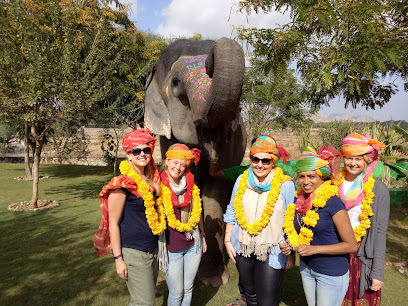
Amber Fort View
Experience the breathtaking views of Amber Fort and the stunning landscapes of Jaipur at this must-see historical landmark.
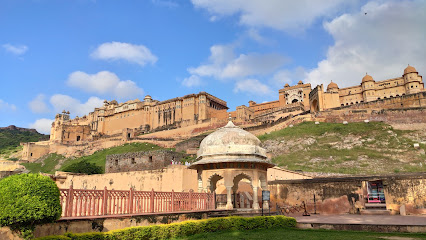
Chand Pol (Moon Gate)
Discover the architectural splendor of Chand Pol, the Moon Gate of Jaipur, a gateway to the rich history and culture of Rajasthan.
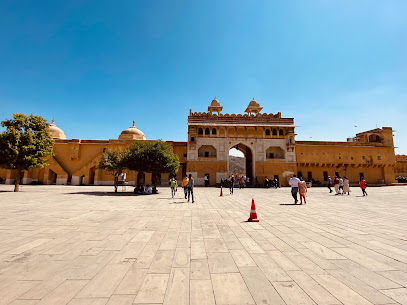
Ganesh Pol
Explore the artistic brilliance of Ganesh Pol, a magnificent gateway at Jaigarh Fort, showcasing Rajasthan's rich heritage and stunning architecture.
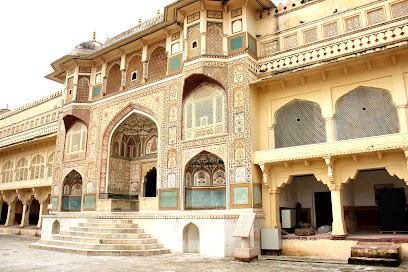
Essential places to dine
1135 AD
Indulge in exquisite Rajasthani cuisine at 1135 AD within Amber Palace, where history meets fine dining in Jaipur.
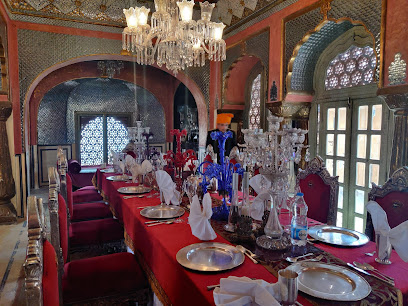
Royal Rajwada Multicuisine Restaurant
Discover authentic Rajasthani flavors at Royal Rajwada Multicuisine Restaurant near Amer Fort in Jaipur - a culinary delight for every palate.
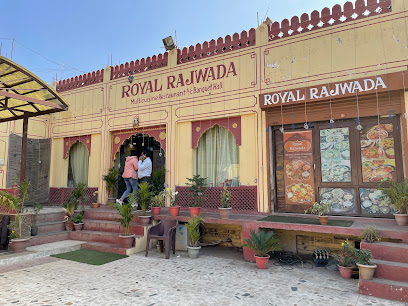
Rainbow Restaurant
Experience the vibrant flavors of India at Rainbow Restaurant near Jal Mahal in Jaipur – where tradition meets modern culinary artistry.
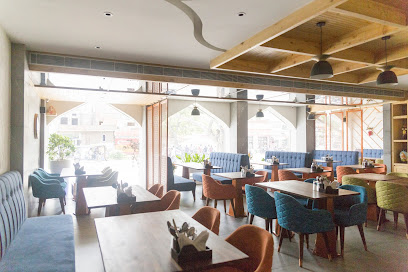
The Stag Rooftop Restro cafe & lounge
Experience exquisite dining at The Stag Rooftop Restro Cafe & Lounge in Jaipur with stunning views and delectable Italian cuisine.
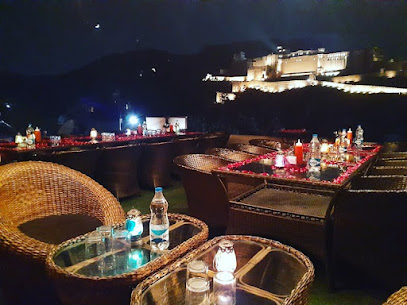
Kesar Restaurant
Experience authentic Indian cuisine at Kesar Restaurant in Jaipur, where tradition meets taste for an unforgettable dining experience.
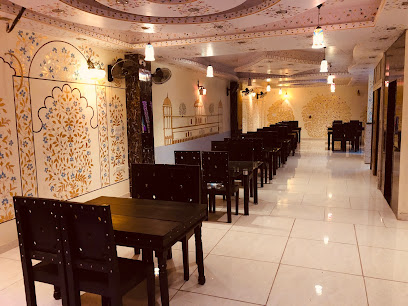
Kokum Bistro
Discover the rich flavors of Rajasthan at Kokum Bistro – a culinary gem offering diverse dishes from vegetarian delights to South Indian specialties.
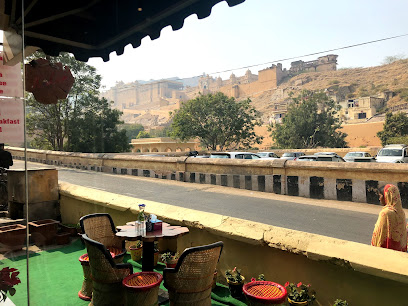
Jaigarh Restaurant
Discover authentic Rajasthani vegetarian cuisine at Jaigarh Restaurant, set against the backdrop of Jaipur's iconic fort.
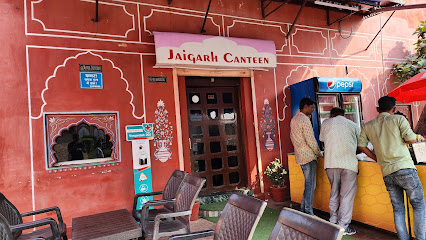
Jaipur cooking
Discover authentic North Indian flavors at Jaipur Cooking - where tradition meets taste in every delightful dish.
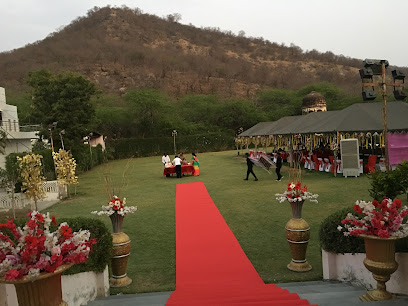
The A's kitchen
Experience authentic Rajasthani cuisine at The A's Kitchen in Jaipur—where tradition meets flavor in every bite.
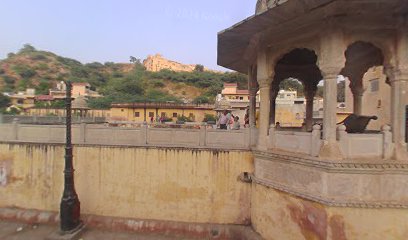
Restaurant
Experience authentic Rajasthani flavors at this charming restaurant in Amer, Jaipur—where tradition meets taste.

Markets, malls and hidden boutiques
Paras Gift and Toy Store,Amer, Jaipur
Explore Paras Gift and Toy Store in Amer, Jaipur for unique souvenirs, vibrant bangles, and delightful toys that capture Rajasthan's rich culture.

Rooh Amer
Discover the charm of Rajasthan at Rooh Amer, where every souvenir tells a story and celebrates local artistry in the heart of Jaipur.
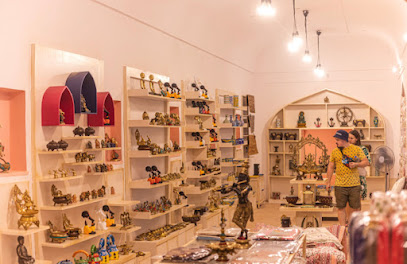
Gs & son's
Explore Gs & Son's Gift Shop in Amer, Jaipur for unique Rajasthani handicrafts and souvenirs that capture the essence of Rajasthan.
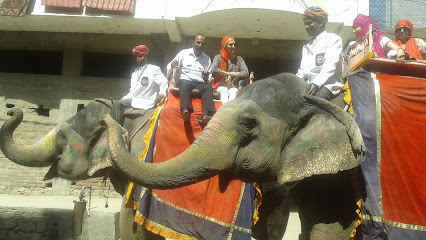
Agarwal Departmental Store
Explore Agarwal Departmental Store in Jaipur for an exciting array of gifts, cosmetics, and unique souvenirs perfect for every traveler.
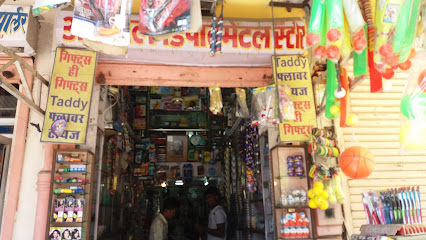
Soni Store
Explore the vibrant local culture at Soni Store, a charming general store in Jaipur offering unique handicrafts and authentic Rajasthani goods.
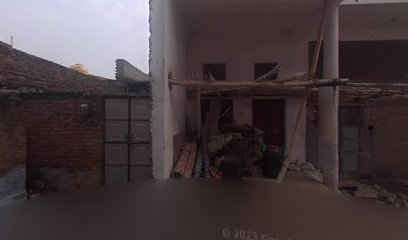
Satguru collection
Discover the best of Rajasthani fashion at Satguru Collection in Amer, Jaipur, where vibrant styles meet traditional craftsmanship.
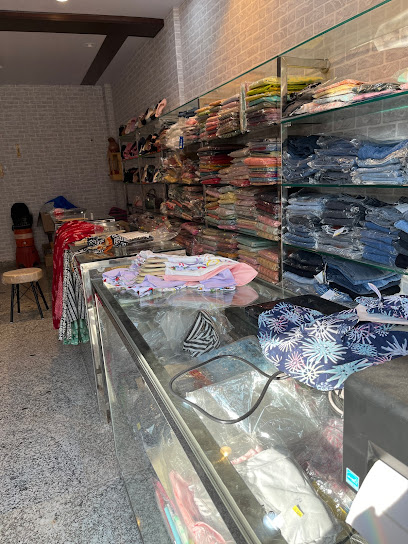
Rahul Store
Discover the charm of local shopping at Rahul Store, a quaint general store in Amer, Jaipur, offering unique products and a taste of Rajasthan's culture.
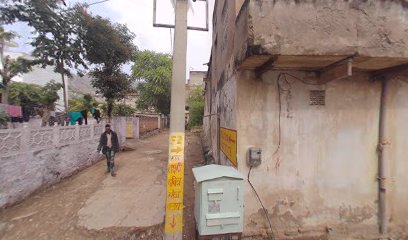
01
Discover the essence of Rajasthan's wellness culture at Jaipur's top health and beauty shop, offering organic products and rejuvenating treatments.

Vikash Store
Experience the heart of Jaipur's culture at Vikash Store, where local treasures and Rajasthani craftsmanship await every traveler.
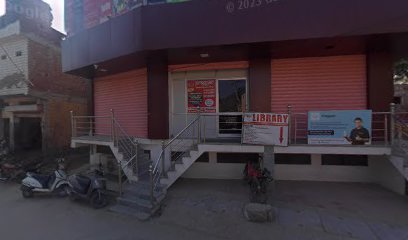
Ravinder Store
Discover local flavors and unique souvenirs at Ravinder Store in Amer, Jaipur – a charming general store steeped in culture and tradition.
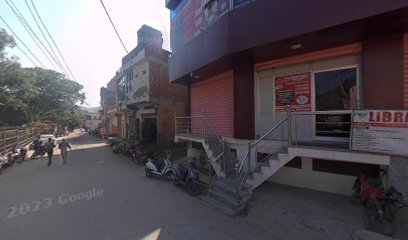
Essential bars & hidden hideouts
1135 AD
Discover the essence of Rajasthan at 1135 AD, a fine dining jewel nestled in the historic Amber Palace, offering exquisite Indian cuisine.
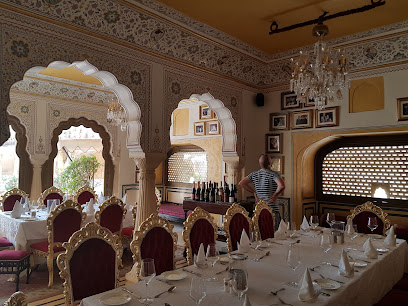
Royal Rajwada Multicuisine Restaurant
Experience the rich flavors of Rajasthan at Royal Rajwada Multicuisine Restaurant, a premier dining destination in Jaipur near Amer Fort.
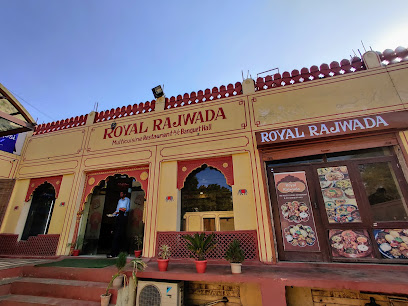
The Stag Rooftop Restro cafe & lounge
Experience the best of Italian cuisine with stunning views at The Stag Rooftop Restro Cafe & Lounge in Jaipur.
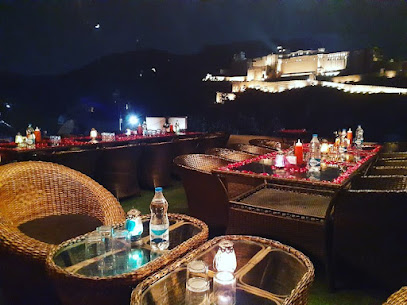
GARH the rooftop cafe
Discover the enchanting views and delectable flavors of Jaipur at GARH the Rooftop Cafe, a perfect blend of ambiance and cuisine.
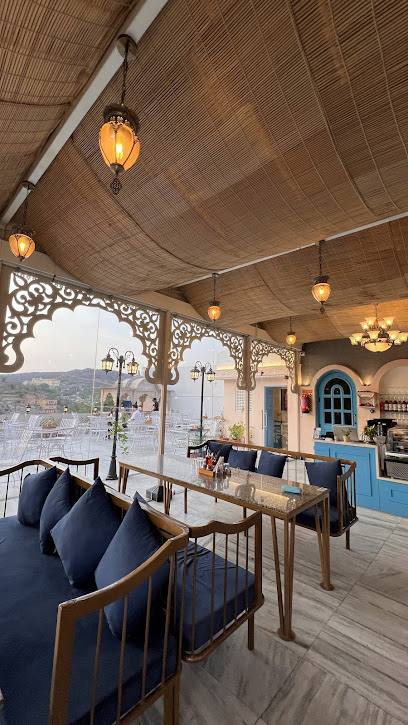
Kokum Bistro
Discover the vibrant culinary experience at Kokum Bistro, where authentic Indian flavors meet international cuisine in a cozy setting.

Cube The Bar
Experience Jaipur’s vibrant nightlife at Cube The Bar, where delightful cocktails and a lively atmosphere await you.
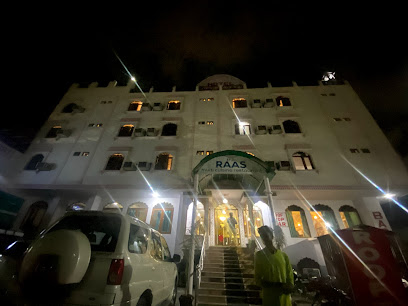
THE AMER RESTAURANT &CAFE
Experience authentic Rajasthani flavors at The Amer Restaurant & Cafe, a must-visit culinary destination in Amer, Jaipur.
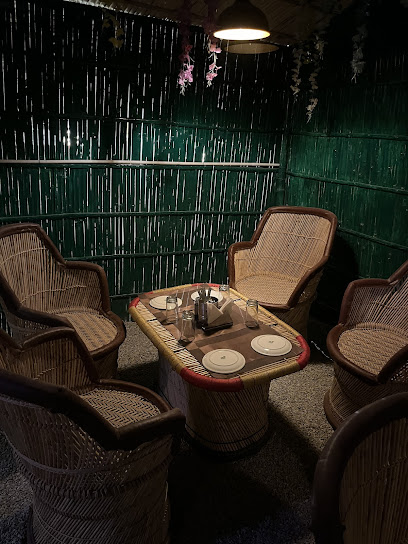
NASHA The Roof Top Bar
Experience Jaipur's stunning skyline at NASHA The Roof Top Bar, where refreshing drinks meet breathtaking views in a vibrant atmosphere.
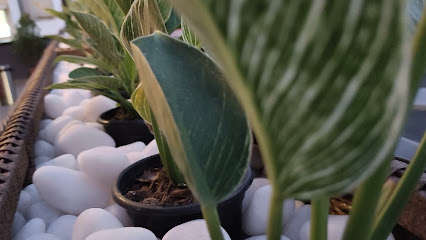
Sharab theka
Experience the vibrant nightlife at Sharab Theka in Kookas, Rajasthan, where exotic drinks meet a lively atmosphere.
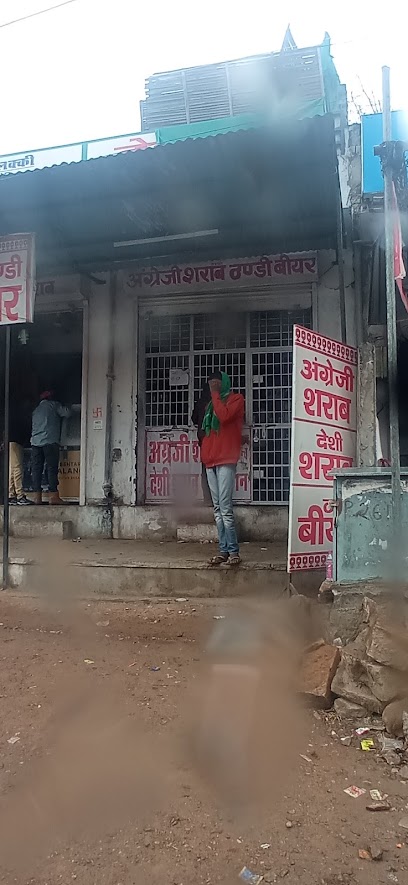
Infinity Pool Bar
Experience luxury and tranquility at the Infinity Pool Bar in Jaipur, a perfect escape with stunning views and refreshing cocktails.
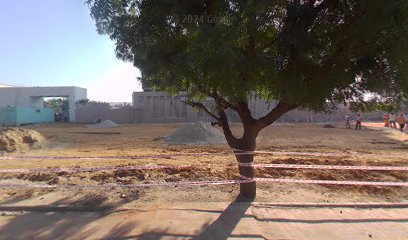
Local Phrases
-
- Helloनमस्ते
[Namaste] - Goodbyeअलविदा
[Alvida] - Yesहां
[Haan] - Noनहीं
[Nahi] - Please/You're welcomeकृपया
[Kripaya] - Thank youधन्यवाद
[Dhanyavaad] - Excuse me/Sorryमाफ़ कीजिए
[Maaf kijiye] - How are you?आप कैसे हैं?
[Aap kaise hain?] - Fine. And you?ठीक हूँ। आप?
[Theek hoon. Aap?] - Do you speak English?क्या आप अंग्रेज़ी बोलते हैं?
[Kya aap angrezi bolte hain?] - I don't understandमुझे समझ नहीं आया
[Mujhe samajh nahi aaya]
- Helloनमस्ते
-
- I'd like to see the menu, pleaseकृपया मेनू देखना चाहूँ
[Kripaya menu dekhna chaahun] - I don't eat meatमैं मांस नहीं खाता
[Main maans nahi khaata] - Cheers!चियर्स!
[Cheers!] - I would like to pay, pleaseकृपया मैं भुगतान करना चाहूं
[Kripaya main bhugtan karna chaahun]
- I'd like to see the menu, pleaseकृपया मेनू देखना चाहूँ
-
- Help!बचाओ!
[Bachao!] - Go away!चले जाओ!
[Chale jao!] - Call the Police!पुलिस को बुलाओ!
[Police ko bulaao!] - Call a doctor!डॉक्टर को बुलाओ!
[Doctor ko bulaao!] - I'm lostमैं खो गया हूँ
[Main kho gaya hoon] - I'm illमुझे बीमारी है
[Mujhe bimaari hai]
- Help!बचाओ!
-
- I'd like to buy...मैं ... खरीदना चाहूं
[Main ... khareedna chaahun] - I'm just lookingमैं बस देख रहा हूँ
[Main bas dekh raha hoon] - How much is it?यह कितने का है?
[Yeh kitne ka hai?] - That's too expensiveयह बहुत महंगा है
[Yeh bahut mahnga hai] - Can you lower the price?क्या आप कीमत कम कर सकते हैं?
[Kya aap kimat kam kar sakte hain?]
- I'd like to buy...मैं ... खरीदना चाहूं
-
- What time is it?समय क्या है?
[Samay kya hai?] - It's one o'clockएक बजे हैं
[Ek baje hain] - Half past (10)दस बजे तक
[Das baje tak] - Morningसुबह
[Subah] - Afternoonदोपहर
[Dopahar] - Eveningशाम
[Shaam] - Yesterdayकल
[Kal] - Todayआज
[Aaj] - Tomorrowकल
[Kal] - 1एक
[Ek] - 2दो
[Do] - 3तीन
[Teen] - 4चार
[Char] - 5पाँच
[Paanch] - 6छह
[Chhah] - 7सात
[Saath] - 8आठ
[Aath] - 9नौ
[Nau] - 10दस
[Das]
- What time is it?समय क्या है?
-
- Where's a/the...?कहाँ है ...?
[Kahaan hai ...?] - What's the address?पता क्या है?
[Pata kya hai?] - Can you show me (on the map)?क्या आप मुझे दिखा सकते हैं (नक्शे पर)?
[Kya aap mujhe dikha sakte hain (naksha par)?] - When's the next (bus)?अगली (बस) कब है?
[Agli (bas) kab hai?] - A ticket (to ....)एक टिकट (....के लिए)
[Ek ticket (....ke liye)]
- Where's a/the...?कहाँ है ...?
History of Amer
-
Amer, originally known as Amber, was founded in the 10th century by the Rajput rulers of the Kachwaha clan. The strategic location of Amer, situated on a hill overlooking the Maota Lake, provided a natural defense and an advantageous position for trade and governance. The fort was constructed during this period, becoming a significant center of power before the establishment of Jaipur.
-
The Amer Fort, a UNESCO World Heritage Site, was commissioned in the late 16th century by Raja Man Singh I, a trusted general of Mughal Emperor Akbar. The fort is renowned for its stunning blend of Hindu and Mughal architecture, featuring intricate mirror work, expansive courtyards, and beautiful gardens. It symbolizes the cultural fusion and the power dynamics between the Rajputs and Mughals during this era.
-
In the early 18th century, Maharaja Sawai Jai Singh II, who moved the capital to Jaipur, continued to influence Amer. He invested in the region's infrastructure and culture, promoting arts, science, and architecture. The architectural legacy of this period can still be seen in the palaces and temples scattered throughout the area, showcasing a rich tapestry of local craftsmanship.
-
As Jaipur became the capital in 1727, Amer experienced a decline in political significance. However, it retained its cultural importance and became a residential area for nobility and scholars. The transition marked a shift in focus, but Amer's historical and architectural richness continued to attract attention, leading to its preservation and tourism in later years.
-
Today, Amer is a thriving tourist attraction, drawing visitors from around the world to its historical sites, including the Amer Fort and the Sheesh Mahal (Mirror Palace). Efforts for heritage conservation have been initiated to preserve the unique blend of Rajput and Mughal influences that characterize the neighbourhood. Festivals and cultural events celebrate its rich traditions, ensuring the legacy of Amer remains vibrant.
Amer Essentials
-
Amer Fort is located about 11 kilometers from the city center of Jaipur. You can easily reach Amer by hiring a taxi or an auto-rickshaw from any part of Jaipur. Local buses also operate from the city to Amer, with the journey taking approximately 30-45 minutes depending on traffic. For those who prefer a more scenic route, consider renting a bicycle for a leisurely ride through the picturesque surroundings.
-
Amer is compact and best explored on foot, especially the areas around Amer Fort and the nearby Jaigarh Fort. Local taxis and auto-rickshaws are available for longer distances or when traveling to attractions outside the immediate area. Bicycles can also be rented from various shops in Jaipur, allowing you to enjoy the scenery at your own pace.
-
Amer is generally safe for tourists, but standard precautions should be observed. Avoid walking alone at night in less populated areas, particularly around the edges of the fort complex. Keep your belongings secure and be cautious of pickpockets in crowded areas. The main tourist areas have a low crime rate, but it’s advisable to stay aware of your surroundings.
-
In case of an emergency, dial 100 for police assistance or 108 for medical emergencies. There are local hospitals and clinics available in Jaipur, with the nearest major hospital being located in the city center. Ensure you have travel insurance that covers medical emergencies. For minor health issues, local pharmacies offer over-the-counter medications.
-
Fashion: Do dress conservatively, especially when visiting religious sites; avoid wearing revealing clothing. Religion: Do respect local customs; remove your shoes before entering temples and cover your head if required. Public Transport: Do be courteous and give your seat to elderly passengers; don’t eat or drink on public transport. Greetings: Do greet locals with a polite 'Namaste' with palms together; avoid overly casual gestures. Eating & Drinking: Do try local dishes, but always ensure food is freshly prepared; don’t drink tap water, stick to bottled or filtered water.
-
To experience Amer like a local, visit the bustling markets for authentic Rajasthani handicrafts and spices. Engage with local artisans, who are often eager to share their craft and stories. Take part in cultural experiences, like cooking classes or traditional dance performances, that are occasionally offered in the area. For stunning views, hike up to the nearby Nahargarh Fort at sunset, which is a favorite spot among locals.
Nearby Cities to Amer
-
Things To Do in Ranthambore
-
Things To Do in Pushkar
-
Things To Do in Agra
-
Things To Do in Delhi
-
Things To Do in Gwalior
-
Things To Do in Jodhpur
-
Things To Do in Udaipur
-
Things To Do in Rishikesh
-
Things To Do in Bhopal
-
Things To Do in Kanpur
-
Things To Do in Shimla
-
Things To Do in Jaisalmer
-
Things To Do in Lucknow
-
Things To Do in Lahore
-
Things To Do in Amritsar

